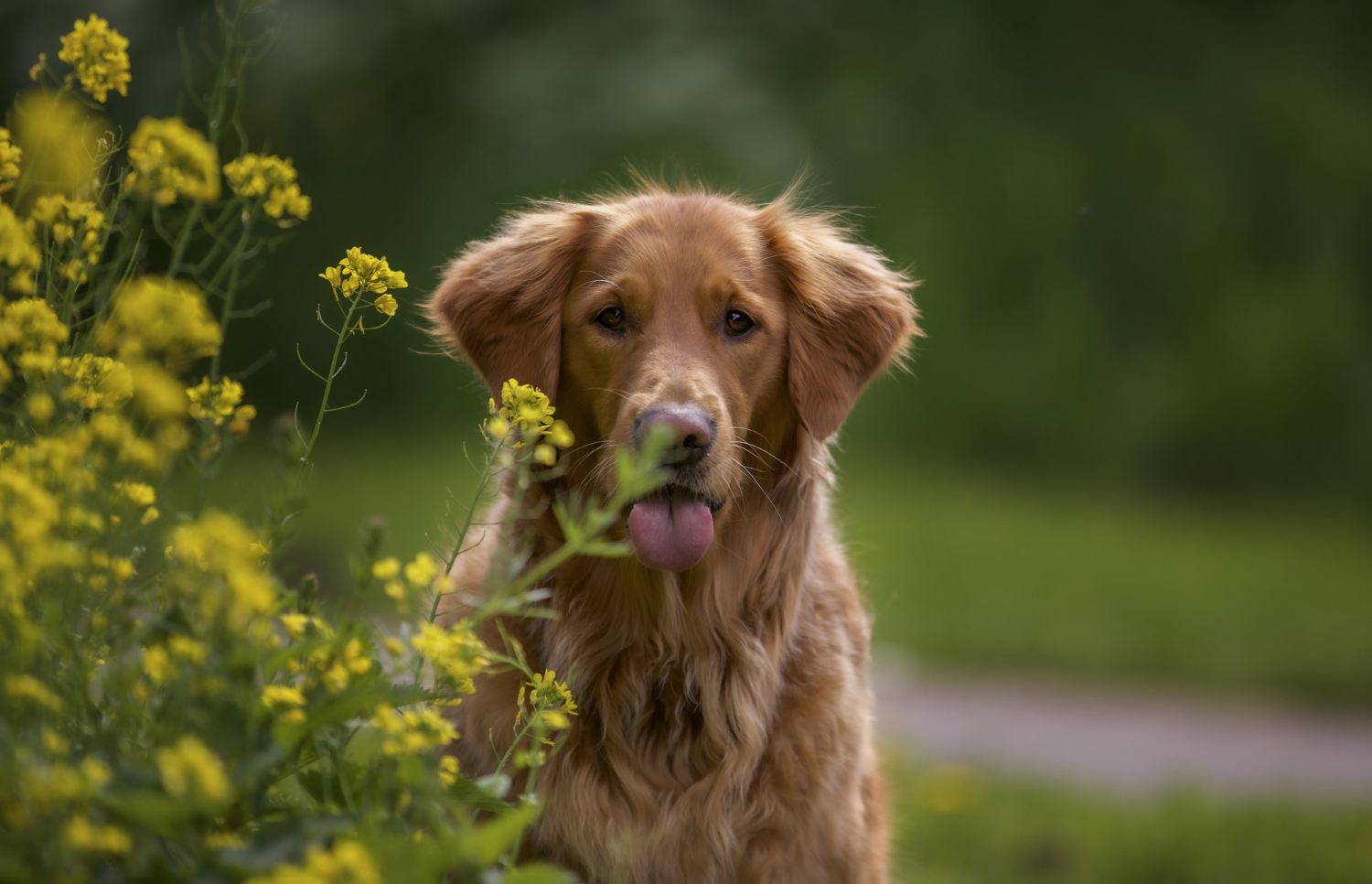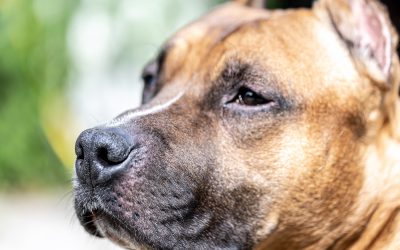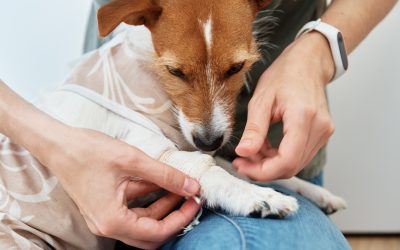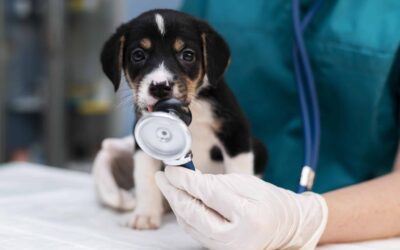My Dog Ate a Bee or Wasp: What Should I Do?

Updated October 13, 2025
Dogs are naturally curious creatures, and their playful exploration sometimes leads them into encounters with buzzing insects, such as bees and wasps. If you’ve just witnessed your dog snap at and swallow a flying insect—or you suspect they did—you’re probably feeling a mix of concern and uncertainty about what to do next. Don’t panic! While this situation requires attention, understanding the signs to watch for and knowing when to take action can make all the difference for your furry friend’s safety and your peace of mind.
Stay Calm and Assess the Situation First
The first and most important thing to do is stay calm. Your dog will pick up on your energy, and remaining composed will help both of you handle the situation more effectively. According to Hepper, staying calm will help you act rationally, as your dog feeds off your calm energy.
Never try to reach your hand into your dog’s mouth or pour any liquid down their throat, as this can be extremely harmful and may cause additional distress or injury.
What Actually Happens When Dogs Eat Bees or Wasps?
The outcome of your dog eating a bee or wasp depends largely on whether they were stung in the process. Many dogs will have absolutely no reaction to swallowing a wasp or bee, especially if the insect didn’t sting them. As long as the bee is swallowed without stinging, it should be digested with no lasting harm to your pup, though it might cause some vomiting at worst.
The real concern arises when the bee or wasp stings your dog’s mouth, tongue, or throat during the encounter. This is when swelling and potentially serious reactions can occur.
Immediate Signs to Watch For
After your dog has encountered a bee or wasp, carefully observe them for these common signs and symptoms:
Mild Reactions (Most Common)
- Localized swelling at the sting site
- Redness and inflammation around the affected area
- Pawing at their mouth or face
- Drooling more than usual
- Mild discomfort or sensitivity to touch
Moderate Reactions
- Swelling of the face, muzzle, or around the eyes
- Hives or welts on the skin
- Restlessness or agitation
- Excessive drooling
- Mild difficulty swallowing
Severe Reactions (Require Immediate Veterinary Care)
- Swelling in or around the mouth that could block breathing
- Difficulty breathing or wheezing
- Vomiting or diarrhea
- Weakness, lethargy, or collapse
- Pale gums
- Seizures
- Coughing or gagging
- Signs of anaphylactic shock
What to Do Right After the Incident
Here’s your step-by-step action plan for the moments immediately following your dog eating a bee or wasp:
Step 1: Inspect Your Dog’s Mouth and Body
Carefully examine your dog’s mouth, face, and body for any visible signs of swelling or a remaining stinger. If you find a bee stinger (bees leave stingers behind, while wasps do not), remove it immediately by gently scraping it away with a firm object like a credit card. Avoid squeezing the stinger, as this can release more venom into your dog’s system.
Step 2: Apply Cold Therapy
If you notice swelling, apply an ice pack or bag of frozen peas wrapped in a towel to the affected area for 10-15 minutes. This helps reduce swelling and provides pain relief. Make sure not to apply ice directly to the skin, and avoid placing it over the jugular vein on the neck.
Step 3: Monitor Closely
Keep a close eye on your dog for the next 10-12 hours, watching for any signs of allergic reactions or complications. Even if they seem fine initially, symptoms can develop over time.
Step 4: Consider Antihistamines (With Veterinary Guidance)
If your dog has been prescribed antihistamines previously and your veterinarian has approved their use, you may consider administering them as needed. However, according to Blue Cross, never give antihistamines without contacting your vet first, as some human medications can be toxic to dogs.
When to Contact Your Veterinarian Immediately
Certain situations require immediate veterinary attention. Contact your vet or emergency animal clinic right away if you notice:
- Any swelling around the face, neck, mouth, or throat
- Difficulty breathing or wheezing
- Multiple stings (wasps can sting multiple times)
- Signs of an allergic reaction, like hives, vomiting, or weakness
- If your dog was stung inside their mouth or throat
- Any collapse, pale gums, or seizures
According to Vets Now, stings inside the mouth or throat are serious because severe swelling can block airways, and multiple stings can be dangerous, especially in small dogs.
Understanding Allergic Reactions in Dogs
Just like people, dogs can have allergic reactions to bee and wasp stings, though severe reactions are relatively uncommon. Most dogs experience only mild local swelling and discomfort, but some may develop more serious symptoms.
Anaphylactic Reactions
Anaphylaxis is a life-threatening allergic reaction that can occur within 10 minutes to several hours after a sting. While rare, it requires immediate emergency treatment. Signs include:
- Rapid onset of symptoms
- Difficulty breathing
- Collapse or extreme weakness
- Vomiting and diarrhea
- Pale or blue gums
- Rapid heart rate
If you suspect anaphylaxis, get to your nearest emergency veterinary clinic immediately.
Delayed Reactions
Some allergic reactions may not appear immediately. Continue to monitor your dog for several hours after the incident, as symptoms may develop gradually.
Special Considerations for Different Situations
If You Didn’t See It Happen
If you suspect your dog ate a bee or wasp but didn’t witness it, look for these clues:
- Sudden pawing at their mouth or face
- Unexplained swelling around the mouth area
- Drooling or difficulty swallowing
- Your dog is acting uncomfortable or distressed
Multiple Stings
If your dog encountered multiple insects or was stung several times, the risk of serious complications increases significantly. Multiple stings can lead to toxic reactions even in dogs that aren’t typically allergic to single stings.
Small Dogs vs. Large Dogs
Smaller dogs may be more susceptible to serious reactions from bee and wasp stings due to their size. The same amount of venom affects a more petite body more significantly than a larger one.
Prevention: Keeping Your Dog Safe from Future Encounters
While it’s impossible to eliminate all risks, there are several steps you can take to reduce the likelihood of future bee and wasp encounters:
Environmental Management
- Keep trash cans securely covered, as bees are attracted to sweet substances.
- Remove plants that heavily attract bees and wasps from your yard.
- Be cautious in areas with known bee or wasp activity.
- Consider changing walking routes if certain areas have high insect activity.
Training and Behavior Management
- Teach your dog a reliable “leave it” command.
- Practice recall training so your dog comes back when called away from distractions, such as insects.
- Use distraction techniques, such as offering treats or toys, when bees are present.
- Consider counter-conditioning training for dogs who obsessively chase flying insects.
Special Cases
Some dogs develop an obsessive-compulsive behavior known as fly-snapping, where they snap at imaginary insects. If your dog displays this behavior, consult with your veterinarian, as it may require behavioral intervention or medical treatment.
What Not to Do
Avoid these common mistakes when dealing with a dog who has eaten a bee or wasp:
- Don’t panic or act frantically.
- Don’t reach into your dog’s mouth with your hands.
- Don’t pour water or other liquids down their throat.
- Don’t give human medications without veterinary approval.
- Don’t ignore signs of swelling, especially around the face and neck.
- Don’t assume everything is fine just because initial symptoms seem mild.
How Can Pet Insurance Help You if Your Dog Needs Treatment?
Pet insurance can be a valuable tool in managing the costs of treating a dog’s veterinary expenses. By having a pet insurance policy in place, you can have peace of mind knowing that you can provide medical care for your furry companion without worrying about the financial burden. Pet insurance can help cover the costs of veterinary consultations, diagnostic tests, medications, and even specialized treatments if required.
Reimbursement
This method is the most common for pet insurance companies. You pay out of pocket for the veterinarian bill, and then the insurance company reimburses you for what’s covered under the insurance plan. The steps look like this.
- You pay the vet bill after your dog’s visit.
- You fill out the pet insurance claim form.
- Submit the claim form and other required documentation to the insurer.
- After the claim is approved, you will be reimbursed for eligible expenses.
What Does Odie Pet Insurance Cover?
Pet insurance covers various veterinary expenses, providing financial protection and peace of mind for pet owners. Here are the details of the coverage options offered by Odie Pet Insurance:
Illness & Injury Plan
The Illness & Injury Plan is an all-inclusive insurance plan designed to cover a wide range of medical needs for your pet. This plan includes comprehensive coverage for various illnesses, injuries, and veterinary services. Some of the covered items include:
- Veterinary exams and consultations
- Diagnostics (e.g., X-rays, lab tests)
- Prescribed medications
- Surgeries and hospitalization
- Rehabilitation, acupuncture, or chiropractic treatments
- Medically necessary supplies
- Euthanasia and cremation
The Wellness Plan
The Wellness Plan is a monthly membership that focuses on preventive care and covers routine veterinary services.
- Provides reimbursements for routine care items, such as wellness visits (exams and vaccines), testing and parasite prevention, dental cleanings and at-home dental care, vitamins, supplements, and more.
- Through Odie’s partnership with Petivity, a leader in smart pet products and proactive care, Wellness Plan members can also receive reimbursements for Petivity devices and health kits, as well as eligible Purina food and supplements.
- Total reimbursement up to $700 per year.
FAQs
What are the immediate signs of a bee or wasp sting?
Localized swelling, redness, pain (whining, limping, pawing at face), excessive drooling, retching, yelping, frantic licking/chewing at the site, hives, itching, and lethargy.
What should I do immediately after my dog is stung?
Inspect for swelling or the stinger. Remove the stinger by scraping it away with a credit card (don’t squeeze). Apply a cold compress for 10-15 minutes and closely monitor breathing.
When should I seek emergency vet care?
Seek immediate help for difficulty breathing, excessive face/throat/tongue swelling, vomiting, diarrhea, collapse, loss of consciousness, or pale gums—these indicate a severe allergic reaction.
Why do dogs eat bees and wasps?
Natural curiosity, hunting instincts triggered by buzzing and movement, or accidental ingestion while playing outdoors. Dogs with strong prey drives are especially prone to chasing insects.
How can I prevent my dog from eating bees?
Teach the “leave it” command, provide adequate exercise, supervise outdoor time, keep trash covered, avoid leaving food/drinks outside, and use natural repellents like citronella.
What other serious symptoms should I watch for?
Difficulty breathing, pale gums, vomiting, diarrhea, drowsiness, disorientation, collapse, seizures, or mouth swelling that interferes with breathing. These require immediate emergency care.




